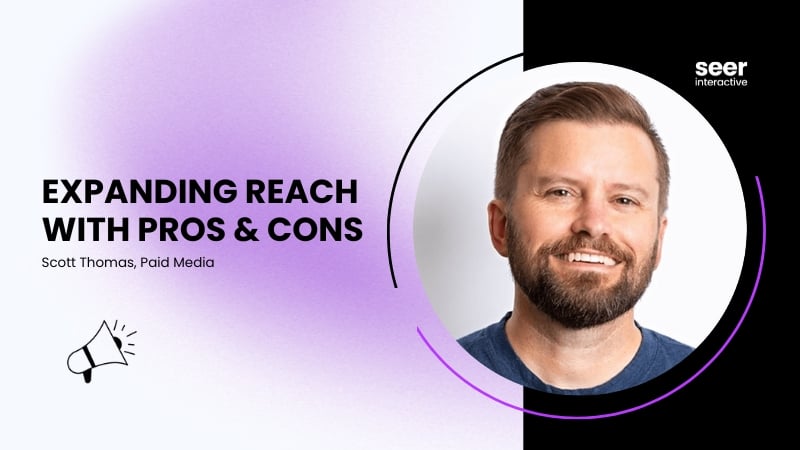Looking to restructure your PPC Account? Restructuring can seem like a hassle, but when done correctly, it can help drive great results. Everyone seems to swear by their own methodology when it comes to account structures, and I’m no different. But before I go any further into my methodology, here’s some quick results from a couple recent account rebuilds that have seen much success:
* In both these cases, the rebuilds were allowed to run unobstructed for at least a 45-day window post-launch.
Lead Gen Account - Enterprise Level Tech Company (Whole Account Restructure):
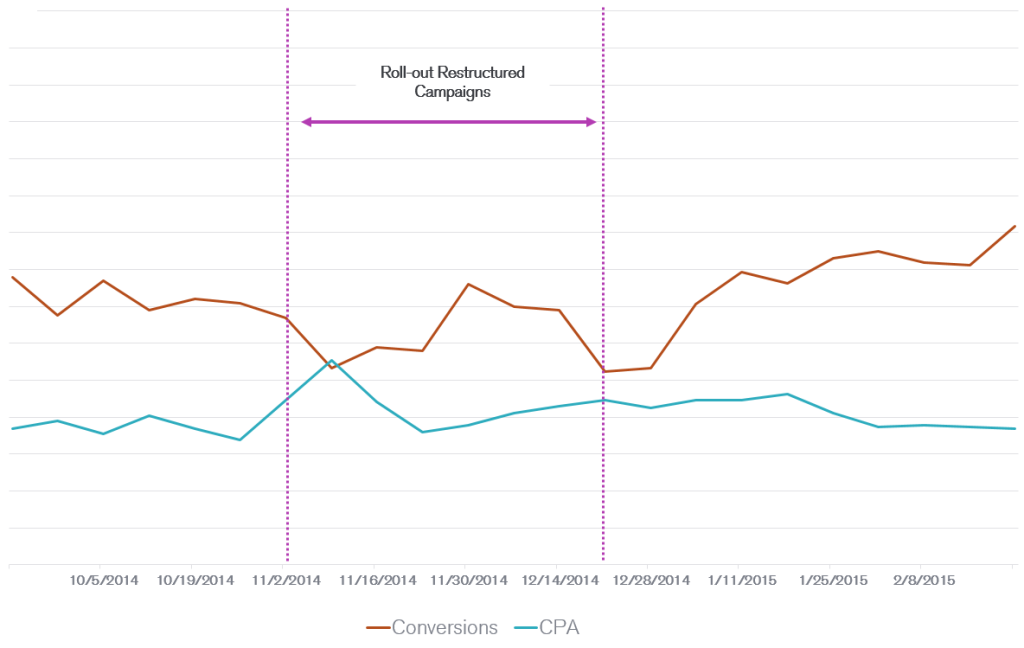
In the 3 months Post-Restructure:
- Conversions Increased by 10%
- CPA Decreased by 2%
- Conversion Rate Increased by 6%
eComm/Lead Gen Account - Large Biotech Company (Whole Account Restructure):
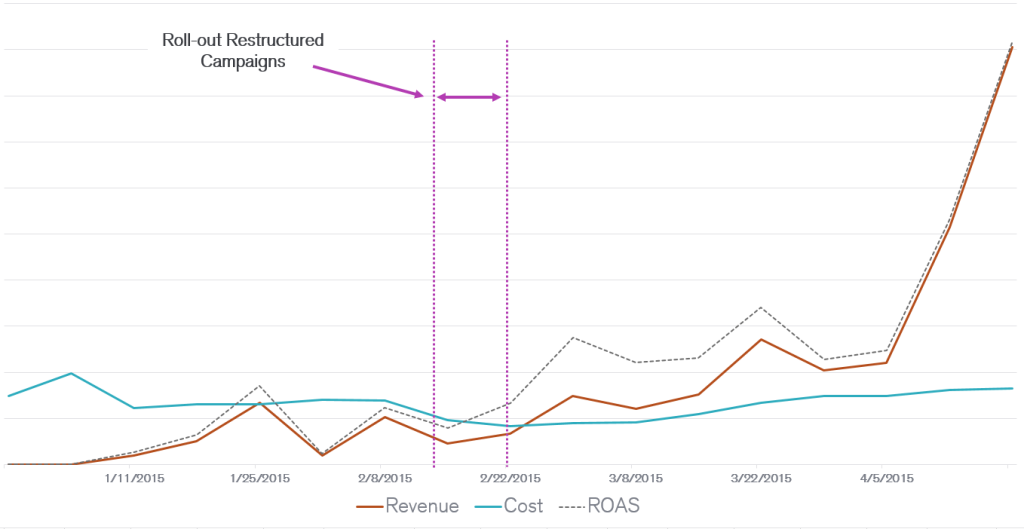
In the 2 Months Post-Restructure:
- Revenue Increased by 579%
- Cost Decreased by 5%
- ROAS Increased by 617%
How Were These Results Achieved?
All this is great, but how do these performance increases come as a result of simply restructuring an account? I’ve been involved in many account restructures throughout my career and am happy to share some best practices that I’ve picked up along the way, which hopefully will help you get similarly great results.
1. Understand Your Client’s Goals
Before beginning the restructure, you need to understand what your client’s desired end result is through their PPC program. For instance, they could want a non-acquisition strategy that’s geared towards awareness and brand building, or an acquisition strategy that’s designed to increase eComm sales or lead generation. Or they could want both! It’s important to know what your clients goals are because goals affect strategy, which ultimately dictates how the account(s) will be set-up.
2. Segment Keyword Match Types
How keyword match types are segmented is a large deciding factor when shaping any account structure. Some account managers prefer to group every match type into the same ad group, some like to segment match types into match type-specific ad groups; I prefer the latter. In small accounts I prefer to segment match types by campaign for better budget control, but in larger accounts this creates a lot of unnecessary chaos and clutter. Sure it takes slightly more time to build initially, but segmenting match types by ad group is a strategy that pays off as the account matures. Segmenting allows for tighter control of keyword bids, better account organization, ease of pausing of keywords while running SQRs, and more targeted ad messaging and landing pages.
So what type of match types should be included in a well-built restructure? That depends on how large the account is and what the client’s goals are. Typically for medium- to large-size accounts I use cloned ad groups that segment broad modified, phrase, and exact match keywords; I exclude broad match altogether and use mirrored negatives to mitigate keyword overlap. Broad modified ad groups are used to discover and capture profitable search queries, but not cast a net so wide that a large amount of spend is wasted on irrelevant search queries.
Example of keywords segmented by match type at the ad group level:
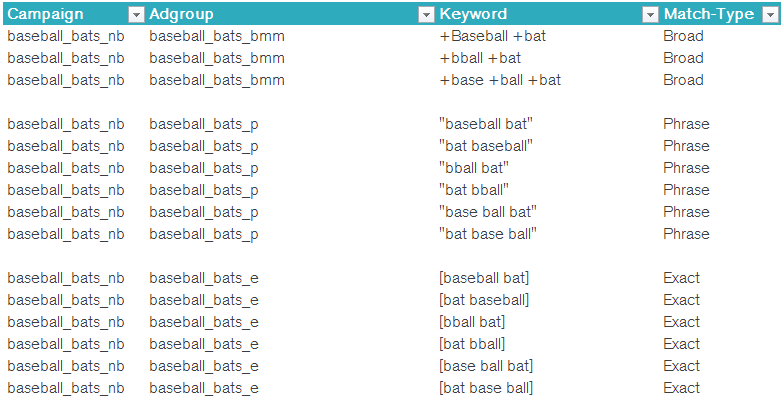
Of course if this were an actual build, I would use many specific, more long-tailed keywords in the phrase and exact match type ad groups. Yes, this all sounds tedious, but it really doesn’t add much extra time to the builds - and it works great.
3. Campaign and Ad Group Nomenclature
How you name your campaigns and ad groups isn’t a factor when it comes to performance, but restructuring with consistent nomenclature is still important. When it comes to campaign nomenclature in specific, it’s important to state the topic (product or service), whether the campaign contains brand or non-brand keywords, and match type (if it’s a smaller account where you choose to break out match type at this level). Usually, I add in remarketing, RLSA, or whatever other descriptive text I’ll need to easily identify the purpose of each campaign. Restructuring accounts with a consistent nomenclature will help you filter, sort, report, and analyze data quickly and in a much more user-friendly way, which will ultimately save you and your client time in the long-run. Below are a few examples of potential campaign nomenclature:
- baseball_gloves_b
- baseball_catchers_gear_nb
- baseball_bats_remarketing
4. Campaign Settings
Campaign settings in Google Adwords are fairly straight forward. Its important to understand which settings need to be adjusted to fit your account restructure goals. Its easy to overlook some of the more discreet settings like bid strategy, delivery method, and ad rotation.
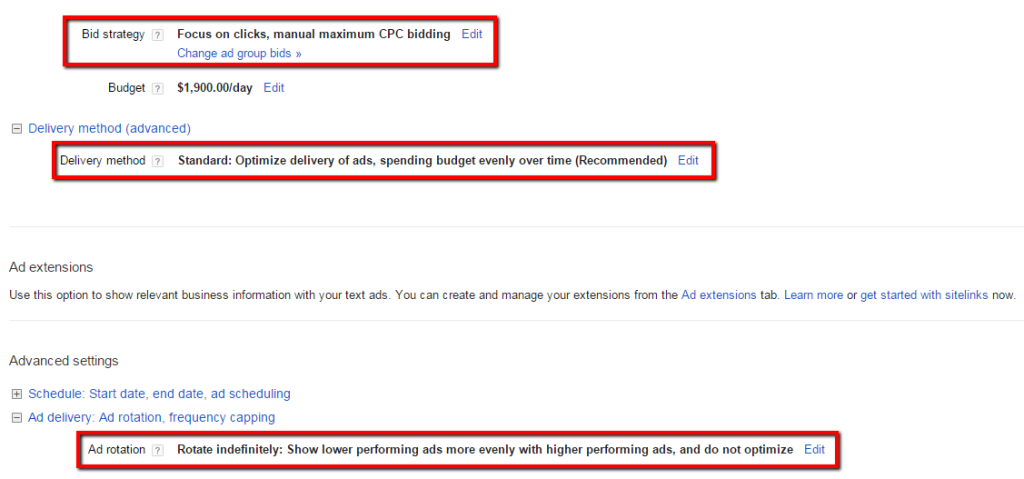
- ‘Bid Strategy’ should typically be set to ‘Focus on clicks, manual maximum CPC bidding.’ When the campaigns mature, you might consider testing out the enhanced CPC feature. I prefer to avoid the automatic bidding option.
- ‘Delivery Method’ setting should always be set to ‘Standard’ when you have a capped budget. If you have an uncapped budget, you may want to consider testing out ‘accelerated’ delivery. If you have an accelerated delivery with a capped budget, you most likely will run out of budget earlier in the day, causing your ads to prematurely stop displaying.
- ‘Ad rotation’ should typically be set to ‘Rotate indefinitely’ so that ad tests can function correctly. That said, if you have a large campaign with hundreds of campaigns and ads, it might be more beneficial to use the ‘Show ads more evenly for at least 90 days, then optimize’ setting. With this setting you lose some control by letting Google choose the best ad (based on conversions) to show in each ad group, but it does save time when managing large accounts.
5. Identify Top Performers
The strategy for any acquisition campaign, whether it be eComm or lead gen, should be to start broad and refine into an efficient ROI machine. This is why it’s important to include broad keywords, which I like to think of as ‘research keywords’. Phrase and exact match type keywords are designed to target relatively specific search queries, but broad modified keywords allow you to capture a wider variety of search queries without breaking the bank. The ultimate goal here is to discover new and profitable search queries. Of course, the broader you go with your keyword strategy, the more maintenance the account requires (i.e. search query reports).
Once each new campaign has been up and running for about 30 - 90 days, depending on the amount of traffic brought in, you should be able to pick out top performing keywords and search queries.

These are so aptly named ‘top performers’ and should be broken out into granular ad groups, perhaps even into single keyword ad groups (SKAGS). With granular ad groups that contain top performers, you can create more relevant and focused ad copy and landing pages, thus increasing your quality score.
6. QA Everything, and Then QA Everything Again
Before you roll out any restructure, it’s imperative that you put aside some time to thoroughly QA each campaign. Before you even post from Editor to the engine, you should scan through each campaign from high-level to low-level, campaign-level to keyword-level. Check URL tagging, match types, nomenclature, settings, extensions, etc. You should have a checklist laid out of all important campaign elements that need to be reviewed before the campaigns are even uploaded. Once uploaded from Editor to the engine, it's important that you run through the same checklist again to confirm that everything was uploaded into the engine correctly. If possible, have another person who has PPC experience QA as well. The larger the account, the more critical it becomes to thoroughly QA.
7. Roll-out Rebuilt Campaigns Piece by Piece
Once you have all your campaign builds ready to go, roll them out piece by piece - especially if your account is medium to large. It doesn’t have to be one by one, but you should keep it to a few at a time. Newly launched campaigns typically have a period of slow performance immediately post-launch, so strategically rolling campaigns out will help offset this initial phase. I usually don’t mind pushing all rebuilds live at once in smaller accounts because the impact will be lesser.
Another reason to roll out campaign rebuilds in chunks is to monitor for anomalies. If a setting isn’t correct, or if a bid or budget error goes unnoticed prior to launch, then it’s much easier to monitor and pinpoint that error if there are only a few new campaigns running. Thus, it’s important to also leave a small window in between campaign rollouts to be used to QA each new campaign.

